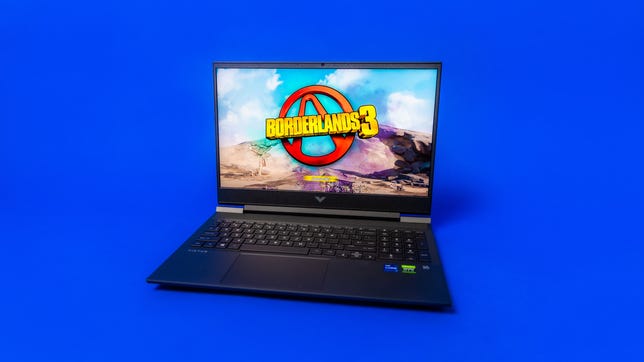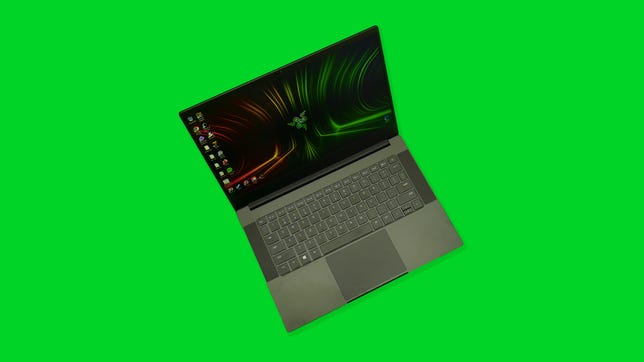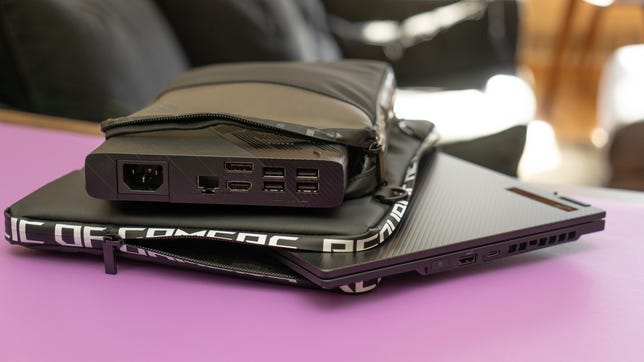Technologies
Best Gaming Laptops for 2023
Check out the best gaming laptops, for when it’s time to play.

Gaming laptops are great for playing PC games on the go. Though they aren’t the most portable laptops, the best gaming laptops are a somewhat portable alternative to the powerful and towering desktop PC.
But there’s a lot more you need to know than just the laptop’s raw power. A laptop with the best graphics card, SSD and processor may have the specs to blow your mind, but it could all underperform if the components overheat easily and don’t have proper airflow.
Battery life can also impact the stability of your gaming performance. And though you probably don’t want to always use an external mechanical keyboard with per-key RGB backlighting, a system’s WASD keys can feel like mashed potatoes under your fingers.
Quality doesn’t come cheap, but if you’re on a tight budget and know where to compromise — such as looking for a model with components you can upgrade later to make your up-front cost a little lower, or opting for a screen that’s lower resolution and slower — you can still get something that’ll ensure a good gaming experience.
Plus, advances in cloud gaming mean you can play more games on lower-end hardware than ever before. So it’s not a given that you’ll need to bust your budget to pay for a new laptop. With cloud gaming, you do have subscription fees, so make sure to factor that in.
Check out our recommendations for best gaming laptops below. This list is periodically updated as we test and review products so you can find your own best gaming laptop.
James Martin/CNET
The HP Victus 16 is a strong, affordable option. It offers a respectable balance for people with different needs for play and work. Spending more will likely get you better build quality and more enjoyable audio. But if you can get past the screen wobble, the Victus can hold its own against pricier models.
Prices start at about $700 for the 15-inch model, but I really recommend avoiding configurations with 8GB RAM; MacOS can get away with that, but Windows has more overhead. For a little more ($890), you can get a reasonable low-end model that you won’t outgrow quickly with an Intel i5-12450H, 12GB RAM, 512GB PCIe NVMe, a 144Hz 1080p screen and GeForce GTX 1650.
The cheapest model should still be able to play most games in 1080p with the graphics settings at medium to high.
Josh Goldman/CNET
The Acer Nitro 5 comes in both 17.3- and 15.6-inch sizes. A 17-inch cheap gaming laptop is a rarity with entry-level gaming laptops; most sub-$1,000 gaming laptops have 15.6-inch displays, and the Acer’s larger screen lets you sink in and get lost in your chosen gaming world. The 17-inch version we reviewed starts at less than $900 with an AMD Ryzen 5 5600H,1080p screen and an GTX if you’re OK with 8GB RAM. If you can manage about $200 more though, you can get a significantly better system, with an i7-11800H, RTX 3050 Ti and 16GB RAM.
At this level, you’ll be able to play current games at FHD resolution with the graphics settings at medium to high, depending on the game you’re playing, of course. Still, Acer makes an affordable gaming laptop that packs in some nice extras like direct controls for power and cooling and upgrades access to memory and storage.
Lori Grunin/CNET
A smaller version than the 15-inch staple, the 14-inch Razer Blade delivers a lot of gaming power for its size without feeling small — an important consideration for a gaming laptop. It also offers decent battery life, a nice size for travel and a subtle design (for a gaming laptop) that’s buttoned-up enough for sitting in a meeting with the top brass or clients.
Lori Grunin/CNET
Asus pairs an ultraportable 13-inch two-in-one that has a relatively powerful AMD CPU with an external GPU dock equipped with a near-top-of-the-line Nvidia GeForce RTX 3080 mobile processor, and the result is an incredibly flexible system for both work and play that outperforms many bigger, clunkier gaming laptops. Because it’s a two-in-one, you can comfortably use an external gaming keyboard without the built-in keyboard getting in the way. The stand-alone model has gotten an upgrade to an Nvidia RTX 3050 Ti since I reviewed it, but the bundle with the XG Mobile still has a GTX 1650.
Other notable gaming laptops we’ve tested
We’re working our way through a raft of 2022 systems, and we’ll update here with those that stand out — just not quite enough for a blanket recommendation.
Razer Blade 15 ($2,600): The 2022 refresh of the Blade 15 retains the title of least-gaming-like gaming laptop, but doesn’t forgo the speed. Like all Razers it’s pretty expensive. The 14-inch is our pick between the two, though, because it’s less expensive and more portable. However, if you need more speed you may need to splurge a little for a bigger system that has more power to cool the hot components. Read the Razer Blade 15 review
Asus ROG Zephyrus G14 ($1,529): Asus’s latest version of its all-AMD 14-inch laptop is compact and definitely turns in some excellent performance when it’s plugged in, but when you pull the plug it can get subpar speeds on the types of things you’d frequently do unplugged. Like work. Read the Asus ROG Zephyrus G14 review
Gaming laptop FAQs
Do you still have to compromise on battery life?
A compromise you’ve traditionally had to make has been battery life, which has typically lasted as little as 2 hours of nonstop gaming. You also couldn’t play most complex games — GPU- or CPU-intensive ones — on battery power. Processors would get throttled back and screens dim during hard-core gaming sessions, so a laptop that felt nimble when connected became a slog on battery power, turning your epic battles into battles of frustration.
That’s been changing recently, as Intel, AMD and Nvidia have concentrated on improving their power management technologies. No, you still can’t play for 10 hours on battery power, but now you can find some great gaming laptops with 10-hour battery lives to make gaming on the road more feasible.
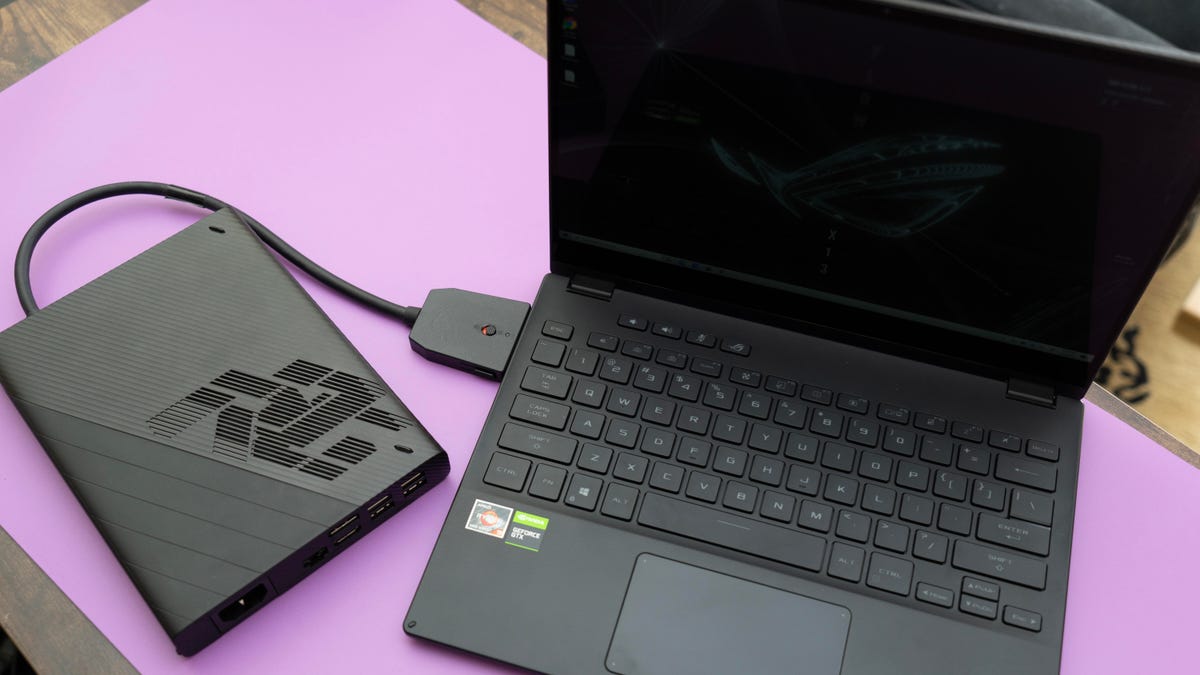

The Asus ROG Flow X13 with its optional sidekick the Mobile XG offers a blended option for gamers: The small, lightweight laptop has a powerful AMD Ryzen 5900HS CPU and an Nvidia GTX 1650 GPU for lightweight gaming, while the external dock incorporates an RTX 3080 mobile GPU and extra connections.
Lori Grunin/CNETWhat do I need to know about a gaming laptop’s GPU (beyond speed)?
The fastest graphics card currently available in a laptop is the Nvidia GeForce RTX 3080 Ti with the usual Max-Q variants. The Max-Q versions run at slower frequencies than their full-size siblings — that keeps down the noise and heat and allows them to fit into thinner designs. RTX models also accelerate ray-traced rendering and provide intelligent upscaling (also known as DLSS) where it’s explicitly supported. If your favorite games don’t use it, the lower-end Nvidia GTX 1660 Ti incorporates Turing, the last generation of Nvidia’s technology, without the extra cost or power burden of the RT cores.
The problem with the Max-Q, though, is that with its last-generation Optimus technology that’s still used by a lot of laptops, you have to reboot to switch between a dedicated GPU mode and a power-saving mode, which only uses the GPU for accelerating, not actually drawing the screen (so every frame has to travel from the GPU’s dedicated memory over the system bus to the CPU and then to the screen rather than going directly from the GPU memory to the screen).
That means it can’t take advantage of adaptive refresh-rate technologies and it can negatively affect frame rates. So why not leave it on the GPU mode all the time? Because you’ll frequently get poorer CPU performance and even lesser graphics performance in games that balance CPU and GPU usage rather than going all-out on the GPU.
Nvidia launched the new generation of its Max-Q architecture, which introduced Advanced Optimus, in 2020. It’s smarter, with the integrated and discrete graphics sharing (rather than switching) the pipeline to the display, no reboot necessary. But Advanced Optimus needs a major change to system design, so laptops supporting Advanced Optimus still aren’t plentiful.
You can spot systems that require a reboot, both AMD- and Nvidia-equipped models, when they say they offer a MUX switch. That just means it’s more convenient than the next-step-down alternative, which is having to manually change it in the BIOS.
AMD’s current high-power laptop GPUs, the Radeon RX 6600M, 6700M and 6800M, don’t quite reach the level of the fastest Nvidia RTX models, but the 6800M has gotten pretty close, with performance on average falling between the RTX 3070 and 3080. AMD also launched its first line of S-series mobile GPUs, which require less power, and thus less cooling, for new thin-and-light gaming laptops like the 2022 ROG Zephyrus G14.
On the near horizon, Intel finally launched its first generation of Arc discrete high-performance GPUs, though we’ve yet to see any for the gaming laptops.
Does a gaming laptop’s CPU matter?
Yes, but not always. In general, sims benefit from faster clock speeds and more cores since those are required for the heavy calculations when worlds get complex. More and more AAA games are also starting to balance loads better between the CPU and GPU where possible as well. And if you bounce back and forth between a game and the rest of Windows, it can help speed that kind of multitasking a bit.
Still, a lot of games, especially first-person shooters, don’t take advantage of more than four cores. That was partly Intel’s rationalization for its continued reliance on its old 14-nanometer architecture for the 10th-gen high-performance (H series) processors. It let the company boost single-core clock frequencies, compared with gains it would have made by moving to a smaller process technology such as Ice Lake, which is designed to support more cores on less power draw.
Intel recently jumped to 10nm Alder Lake for its 12th-gen CPUs, which combines performance and power-efficient cores similar to Apple’s M1 and M2 chips. What we’ve seen thus far (like in the MSI Raider GE76) does show how fast the 12th-gen H-series CPUs can run and how it can help extend battery life.
What do I need to know about screen size and refresh rate?
And then there are the screens. All the major companies bumped their flagship 1080p configurations to 360Hz, but for many a gamer, they’re not essential: 240Hz max should be fine for those few times you can get frame rates above 240fps. Even 144Hz will do for many people, but artifacts like tearing, caused by the screen refresh rate becoming out of sync with the frame rate, depend on your games as much as your laptop brand and hardware.
We’re also seeing a lot more 120Hz 4K screens in the flagship models in both 17- and 15-inch sizes and a ton of 165Hz and 240Hz QHD (1440p) options. The latter are my favorites, balancing higher resolution — certainly enough on a laptop screen — with gaming-friendly refresh rates.
How we test computers
The review process for laptops, desktops, tablets and other computer-like devices consists of two parts: performance testing under controlled conditions in the CNET Labs and extensive hands-on use by our expert reviewers. This includes evaluating a device’s aesthetics, ergonomics and features. A final review verdict is a combination of both those objective and subjective judgments.
The list of benchmarking software we use changes over time as the devices we test evolve. The most important core tests we’re currently running on every compatible computer include: Primate Labs Geekbench 5, Cinebench R23, PCMark 10 and 3DMark Fire Strike Ultra.
A more detailed description of each benchmark and how we use it can be found in our How We Test Computers page.
More for gamers
- Best Graphic Card for Gamers and Creatives for 2023
- Fastest VPNs for 2023
- Best VPN Service for 2023
- Best Laptop Deals 2022: Windows and Chromebooks for Under $500
-
Best 15-inch Laptops for 2023
- 3 Great VPNs for Xbox for 2023
- Best Mouse for 2023
- 5 Monitors Worth Checking Out for 2023
- Best TVs for Gaming With Low Input Lag
- Razer Blade Pro vs. Origin PC Evo16-S
- Best Laptop Backpack for 2023
- Best Gaming PC for 2023
- Best Drones for 2023
- Best VR Games for Escaping to Other Worlds
- Best TVs for PS5 and Xbox Series X, Series S with 4K, 120fps Input and VRR
- Best DSL Internet Providers of 2023
- Best Rural Internet Providers of 2023
- Best Desktop Computers for 2023
Technologies
Today’s NYT Mini Crossword Answers for Saturday, Dec. 27
Here are the answers for The New York Times Mini Crossword for Dec. 27.
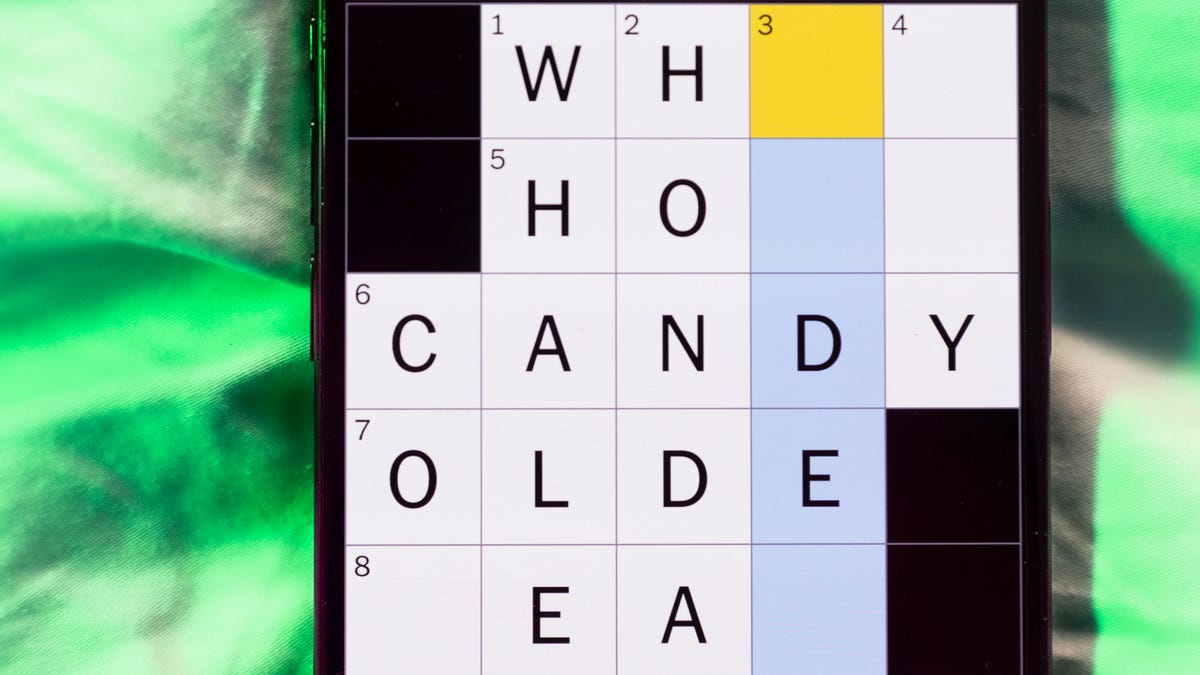
Looking for the most recent Mini Crossword answer? Click here for today’s Mini Crossword hints, as well as our daily answers and hints for The New York Times Wordle, Strands, Connections and Connections: Sports Edition puzzles.
Need some help with today’s Mini Crossword? It’s pretty long for a Mini Crossword, and some of the clues are tricky. The answer to 10-Across is not an expression I use, for sure. Read on. And if you could use some hints and guidance for daily solving, check out our Mini Crossword tips.
If you’re looking for today’s Wordle, Connections, Connections: Sports Edition and Strands answers, you can visit CNET’s NYT puzzle hints page.
Read more: Tips and Tricks for Solving The New York Times Mini Crossword
Let’s get to those Mini Crossword clues and answers.
Mini across clues and answers
1A clue: Fashionable
Answer: HIP
4A clue: Product sold on «The Office»
Answer: PAPER
6A clue: One writing a performance review
Answer: MANAGER
8A clue: With 5-Down, redundant synonym of «outcome»
Answer: END
9A clue: Quiet ___ mouse
Answer: ASA
10A clue: Gives constant compliments, in slang
Answer: GASESUP
12A clue: Ski mountain bump
Answer: MOGUL
13A clue: Uneasy feeling
Answer: ANGST
Mini down clues and answers
1D clue: Personally involved
Answer: HANDSON
2D clue: Hoppy beer, for short
Answer: IPA
3D clue: Mythical horse whose name is an anagram of 10-Across
Answer: PEGASUS
4D clue: Last word in the palindromic sentence «A man, a plan, a canal …»
Answer: PANAMA
5D clue: See 8-Across
Answer: RESULT
6D clue: Ryan of «When Harry Met Sally …»
Answer: MEG
7D clue: Genre for Playboi Carti and Cardi B
Answer: RAP
11D clue: Something in an Easter basket
Answer: EGG
Don’t miss any of our unbiased tech content and lab-based reviews. Add CNET as a preferred Google source.
Technologies
Today’s NYT Connections: Sports Edition Hints and Answers for Dec. 27, #460
Here are hints and the answers for the NYT Connections: Sports Edition puzzle for Dec. 27, No. 460.
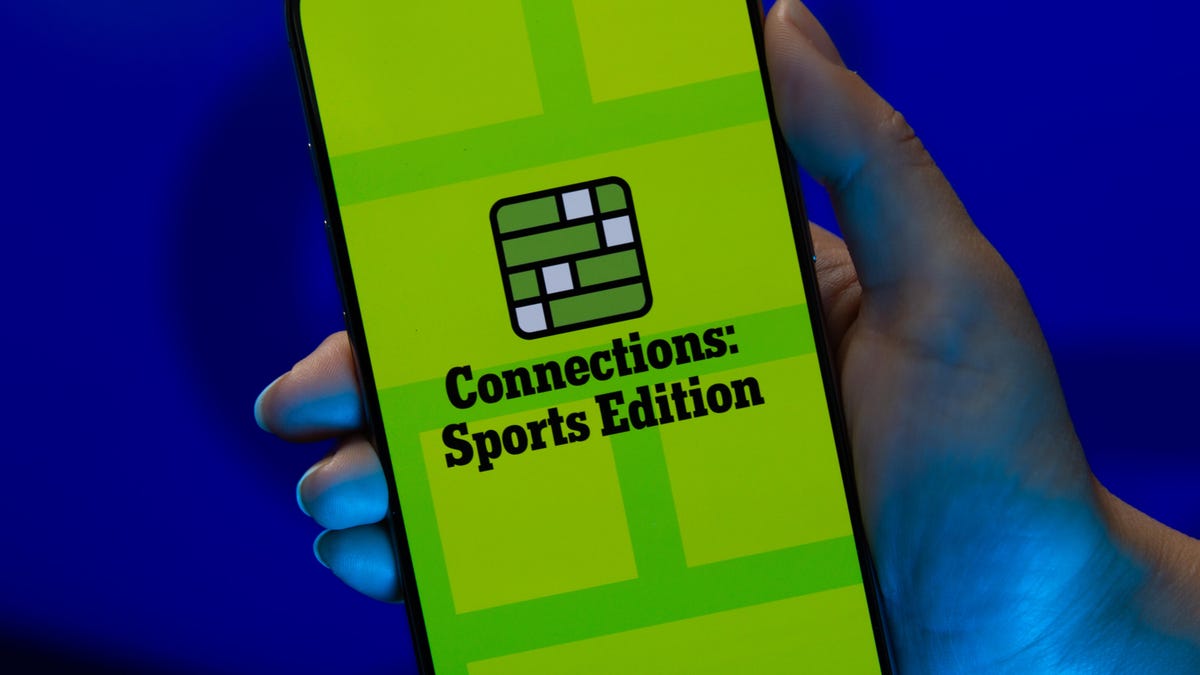
Looking for the most recent regular Connections answers? Click here for today’s Connections hints, as well as our daily answers and hints for The New York Times Mini Crossword, Wordle and Strands puzzles.
Today’s Connections: Sports Edition is a real challenge. That purple category wants you to hunt out something related in four different words, and it’s a toughie. If you’re struggling with today’s puzzle but still want to solve it, read on for hints and the answers.
Connections: Sports Edition is published by The Athletic, the subscription-based sports journalism site owned by The Times. It doesn’t appear in the NYT Games app, but it does in The Athletic’s own app. Or you can play it for free online.
Read more: NYT Connections: Sports Edition Puzzle Comes Out of Beta
Hints for today’s Connections: Sports Edition groups
Here are four hints for the groupings in today’s Connections: Sports Edition puzzle, ranked from the easiest yellow group to the tough (and sometimes bizarre) purple group.
Yellow group hint: Something you save.
Green group hint: An Olympic sport.
Blue group hint: Toronto pitchers.
Purple group hint: Think about the alphabet and look for something hidden.
Answers for today’s Connections: Sports Edition groups
Yellow group: Memento.
Green group: Types of wrestling.
Blue group: Blue Jays to win Cy Young Award.
Purple group: Ends in a homophone for a letter of the alphabet.
Read more: Wordle Cheat Sheet: Here Are the Most Popular Letters Used in English Words
What are today’s Connections: Sports Edition answers?
The yellow words in today’s Connections
The theme is memento. The four answers are collectible, keepsake, memorabilia and souvenir.
The green words in today’s Connections
The theme is types of wrestling. The four answers are arm, freestyle, Greco-Roman and sumo.
The blue words in today’s Connections
The theme is Blue Jays to win Cy Young Award. The four answers are Clemens, Halladay, Hentgen and Ray.
The purple words in today’s Connections
The theme is ends in a homophone for a letter of the alphabet. The four answers are batter’s eye (I), blue jay (J), golf tee (T) and pool cue (Q).
Don’t miss any of our unbiased tech content and lab-based reviews. Add CNET as a preferred Google source.
Technologies
Today’s Wordle Hints, Answer and Help for Dec. 27, #1,652
Here are hints and the answer for today’s Wordle for Dec. 27, No. 1,652.
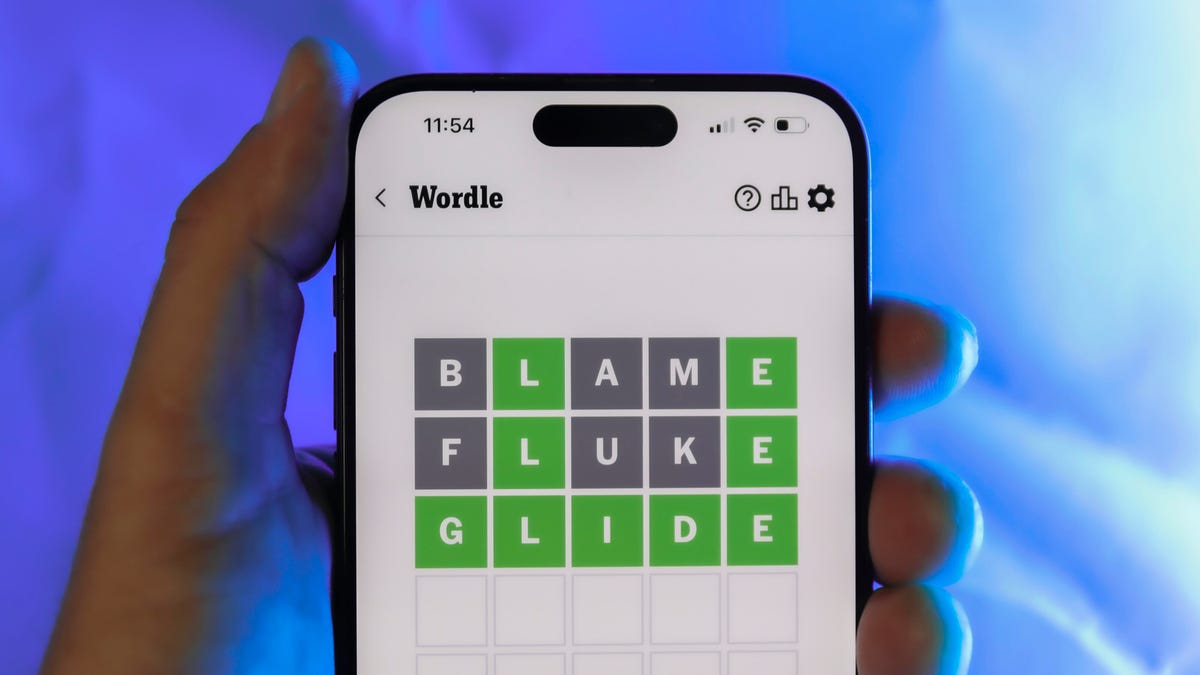
Looking for the most recent Wordle answer? Click here for today’s Wordle hints, as well as our daily answers and hints for The New York Times Mini Crossword, Connections, Connections: Sports Edition and Strands puzzles.
Today’s Wordle puzzle came together pretty quickly for me this time. If you need a new starter word, check out our list of which letters show up the most in English words. If you need hints and the answer, read on.
Read more: New Study Reveals Wordle’s Top 10 Toughest Words of 2025
Today’s Wordle hints
Before we show you today’s Wordle answer, we’ll give you some hints. If you don’t want a spoiler, look away now.
Wordle hint No. 1: Repeats
Today’s Wordle answer has no repeated letters.
Wordle hint No. 2: Vowels
Today’s Wordle answer has one vowel.
Wordle hint No. 3: First letter
Today’s Wordle answer begins with B.
Wordle hint No. 4: Last letter
Today’s Wordle answer ends with H.
Wordle hint No. 5: Meaning
Today’s Wordle answer can refer to a quantity of goods produced at one time.
TODAY’S WORDLE ANSWER
Today’s Wordle answer is BATCH.
Yesterday’s Wordle answer
Yesterday’s Wordle answer, Dec. 26, No. 1651 was SPEED.
Recent Wordle answers
Dec. 22, No. 1647: CONCH
Dec. 23, No. 1648: GLINT
Dec. 24, No. 1649: SPOOL
Dec. 25, No. 1650: PRISM
Don’t miss any of our unbiased tech content and lab-based reviews. Add CNET as a preferred Google source.
-

 Technologies3 года ago
Technologies3 года agoTech Companies Need to Be Held Accountable for Security, Experts Say
-

 Technologies3 года ago
Technologies3 года agoBest Handheld Game Console in 2023
-

 Technologies3 года ago
Technologies3 года agoTighten Up Your VR Game With the Best Head Straps for Quest 2
-

 Technologies4 года ago
Technologies4 года agoBlack Friday 2021: The best deals on TVs, headphones, kitchenware, and more
-

 Technologies4 года ago
Technologies4 года agoVerum, Wickr and Threema: next generation secured messengers
-

 Technologies4 года ago
Technologies4 года agoGoogle to require vaccinations as Silicon Valley rethinks return-to-office policies
-

 Technologies4 года ago
Technologies4 года agoOlivia Harlan Dekker for Verum Messenger
-

 Technologies4 года ago
Technologies4 года agoiPhone 13 event: How to watch Apple’s big announcement tomorrow

